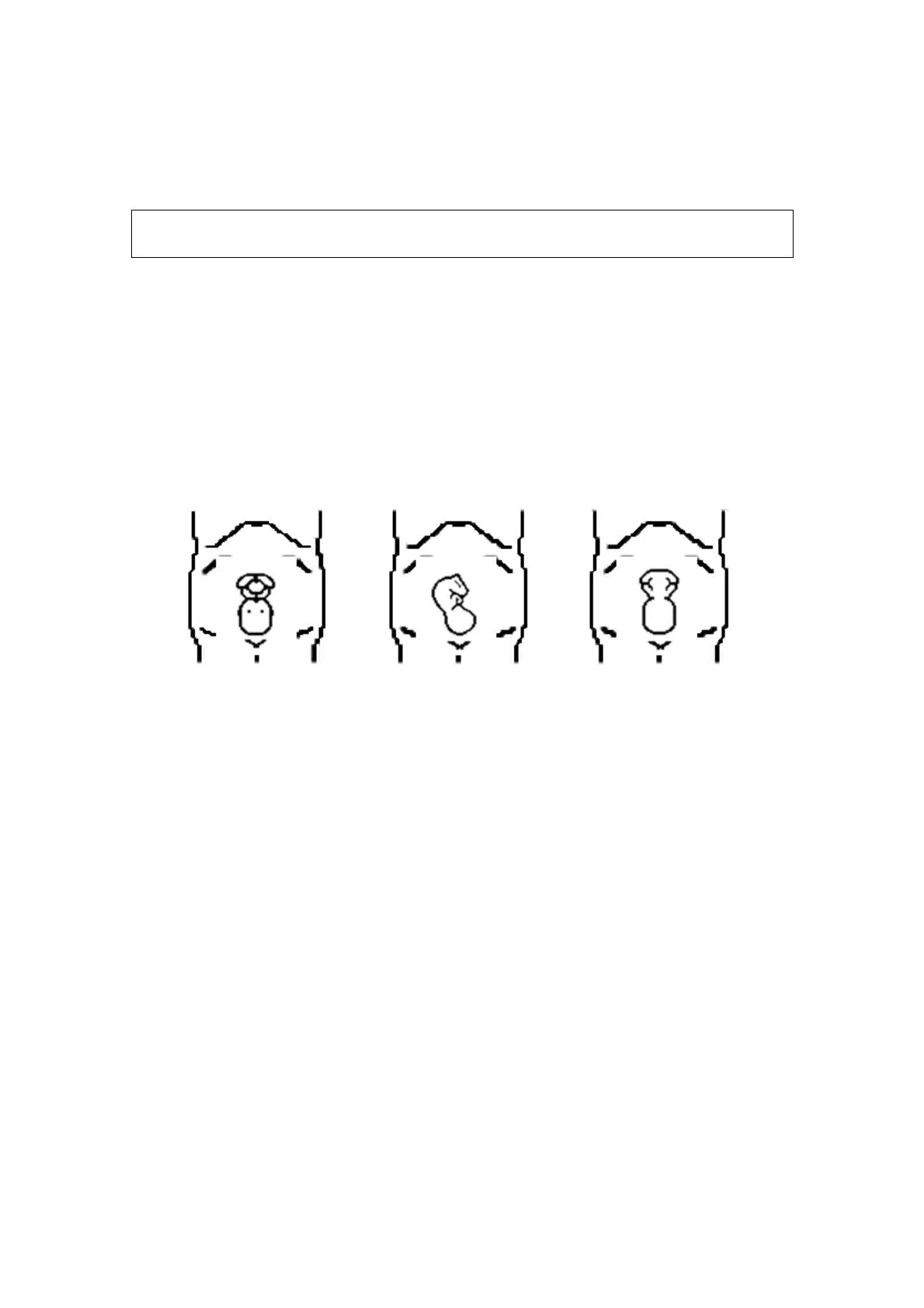Image Optimization 5-31
5.10.1 Note before Use
5.10.1.1 3D/4D Image Quality Conditions
NOTE: In accordance with the ALARA (As Low As Reasonably Achievable) principle,
please try to shorten the sweeping time after a good 3D imaging is obtained.
The quality of images rendered in the 3D/4D imaging is closely related to the fetal
condition, angle of a B tangent plane and scanning technique (Smart3D). The following
description uses the fetal face imaging as an example, the other parts imaging are as the
same.
Fetal Condition
z Gestational age
Fetuses of 24~30 weeks old are the most appropriate for 3D imaging.
z Fetal Body Posture
Recommended: Cephalic face up (figure a) or face aside (figure b).
NOT recommended: Cephalic face down (figure c).
a
b c
z
Amniotic fluid(AF) isolation
The region desired is isolated by amniotic fluid adequately.
The region to imaging is not covered by limbs or umbilical cord.
z The best condition is that the fetus keeps still. If there is a fetal movement in
Smart 3D or Static 3D imaging, you need a rescanning when the fetus is still.
Angle of a B tangent plane
The optimum tangent plane to the fetal face 3D/4D imaging is the sagittal section of
the face, or the coronal section. To ensure high image quality, you’d better scan
maximum face area and keep edge continuity.
Image quality in B mode (2D image quality)
Before entering 3D/4D capture, optimize the B mode image to assure:
z High contrast between the desired region and the AF surrounded.
z Clear boundary of the desired region.
z Low noise of the AF area.
Scanning technique (only for Smart3D)
z Stability: body, arm and wrist must move smoothly, otherwise the restructured 3D
image distorts.
z Slowness: move or rotate the probe slowly. The speed of linear scan is about 2
cm/s and the rotation rate of the fan scan is about 10°/s~15°/s.
z Evenness: move or rotate the probe at a steady speed or rate.

